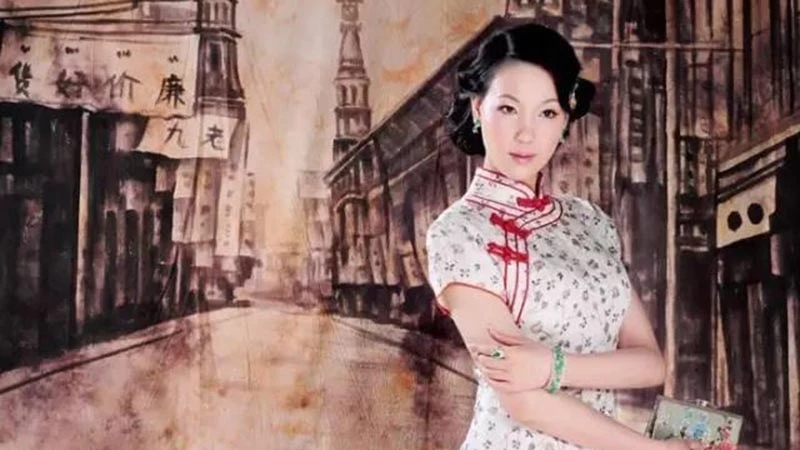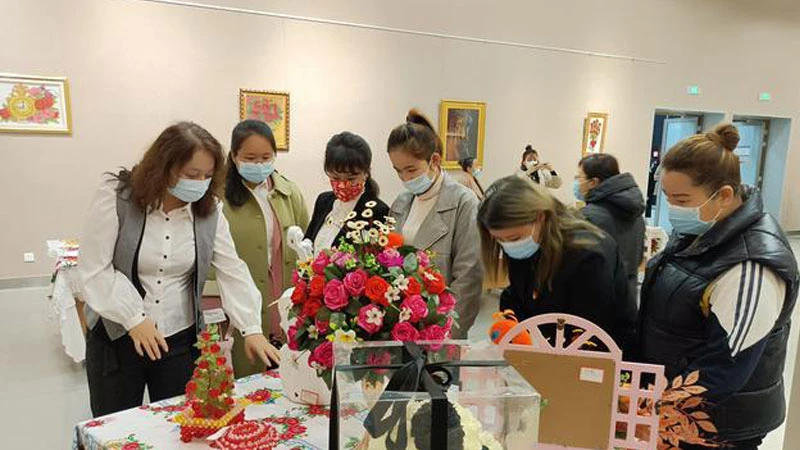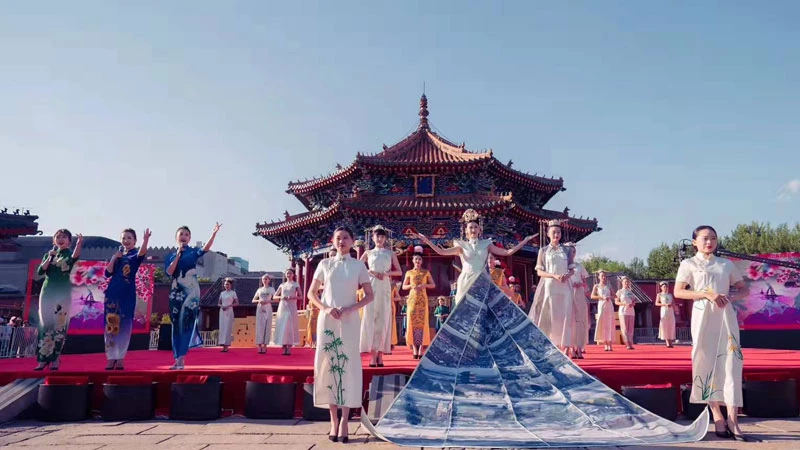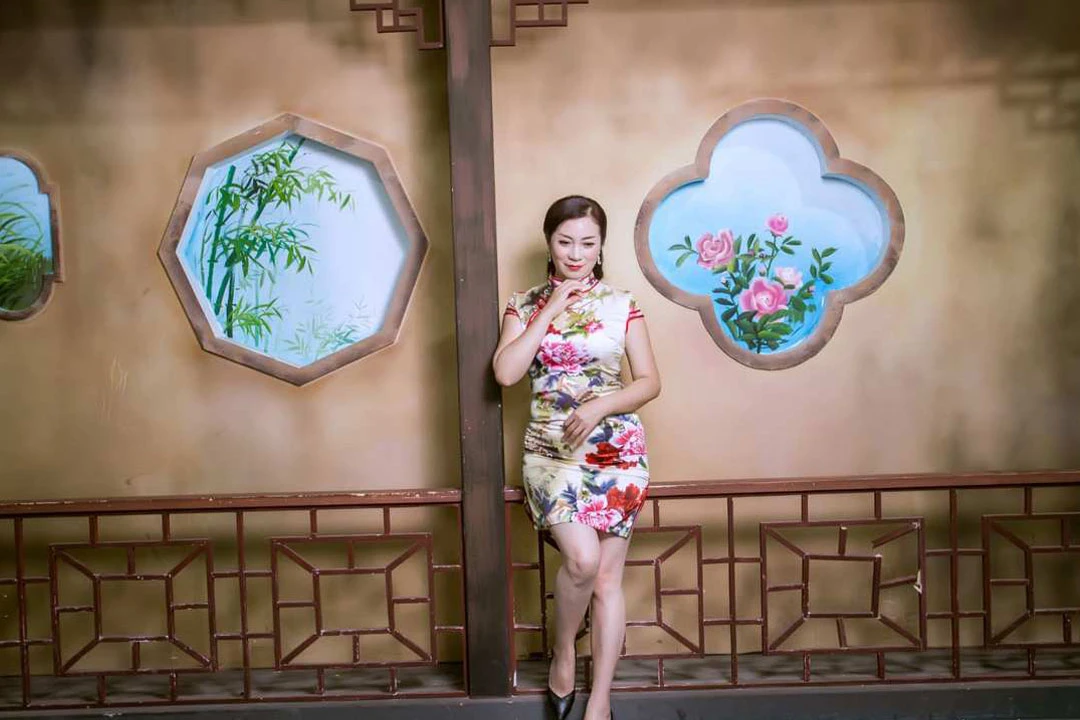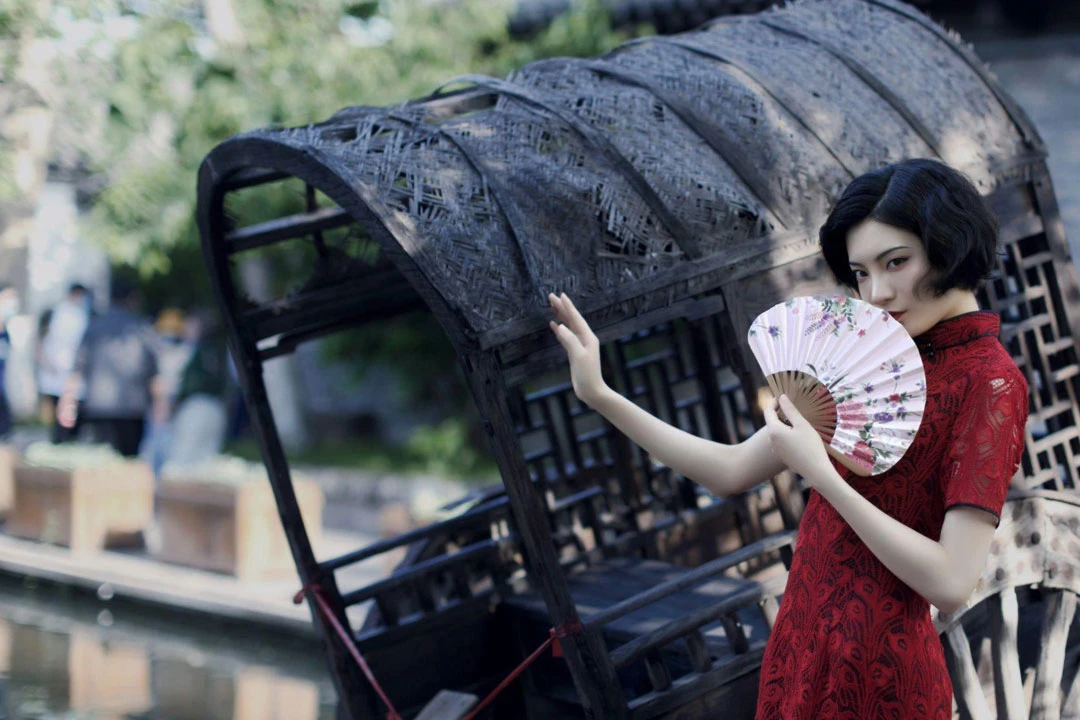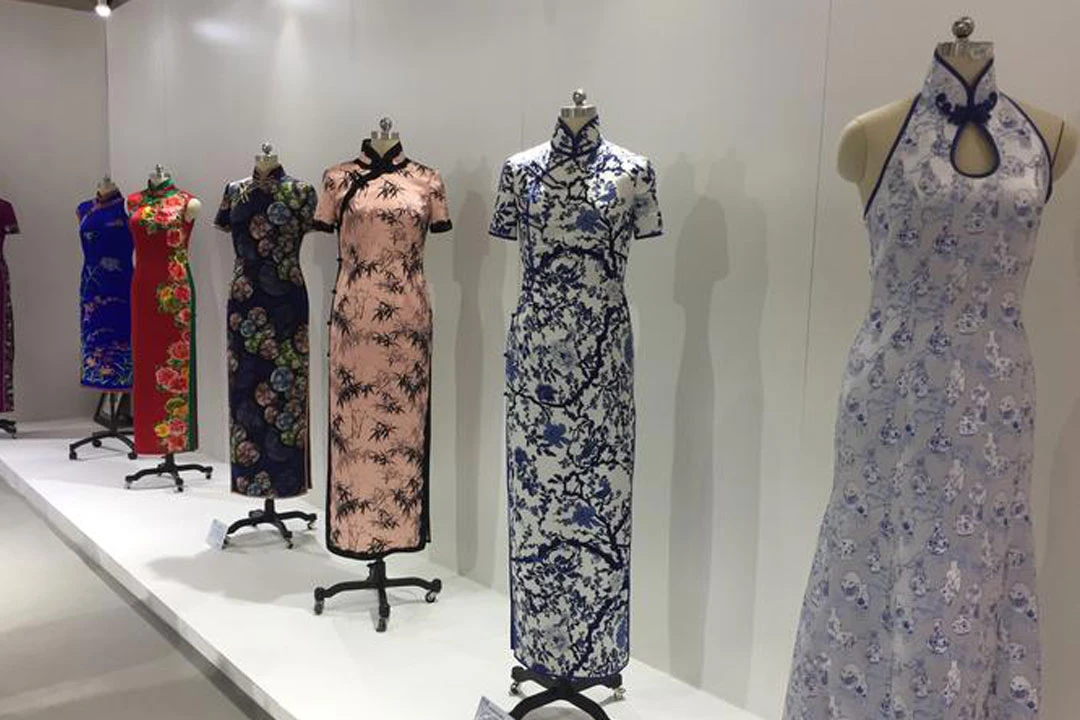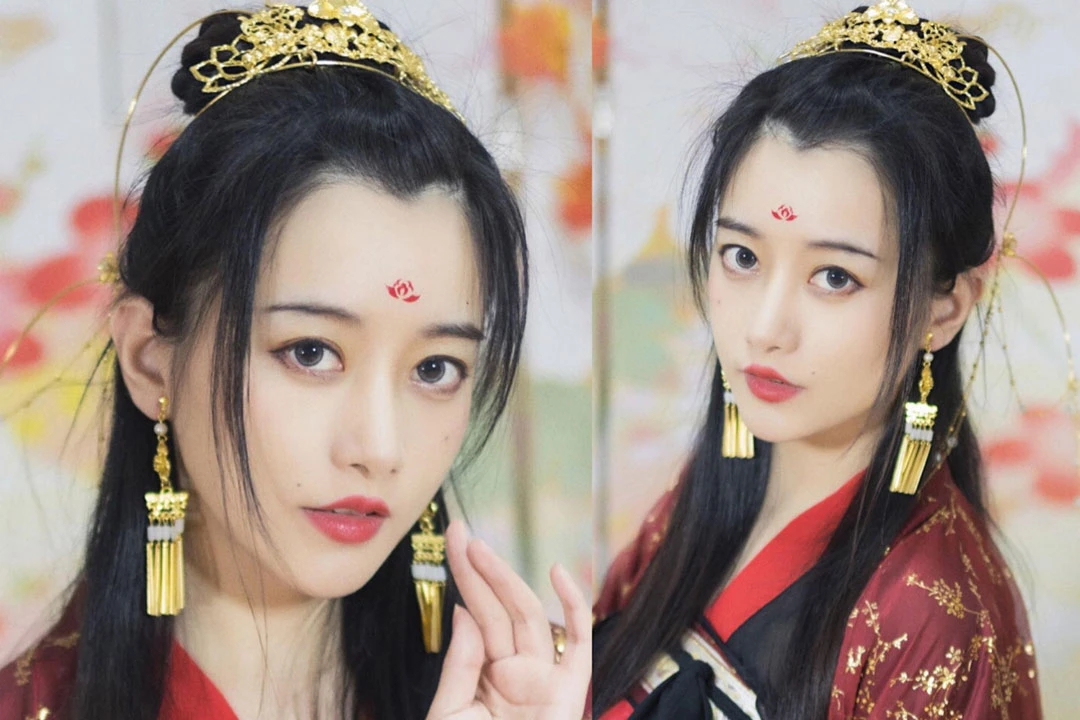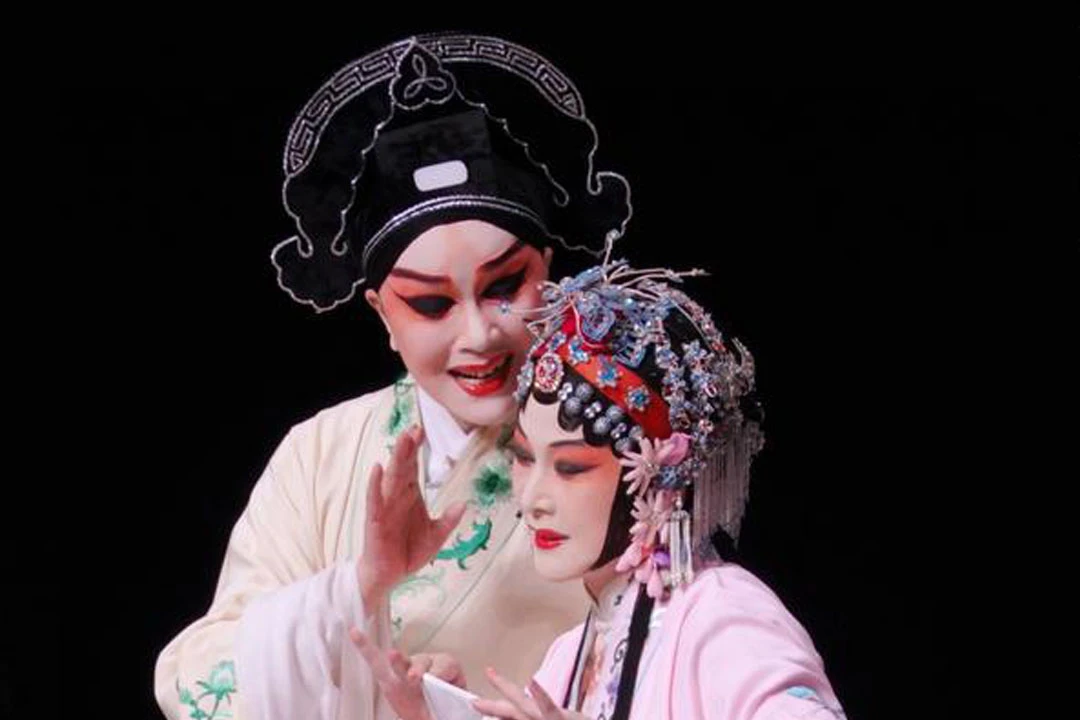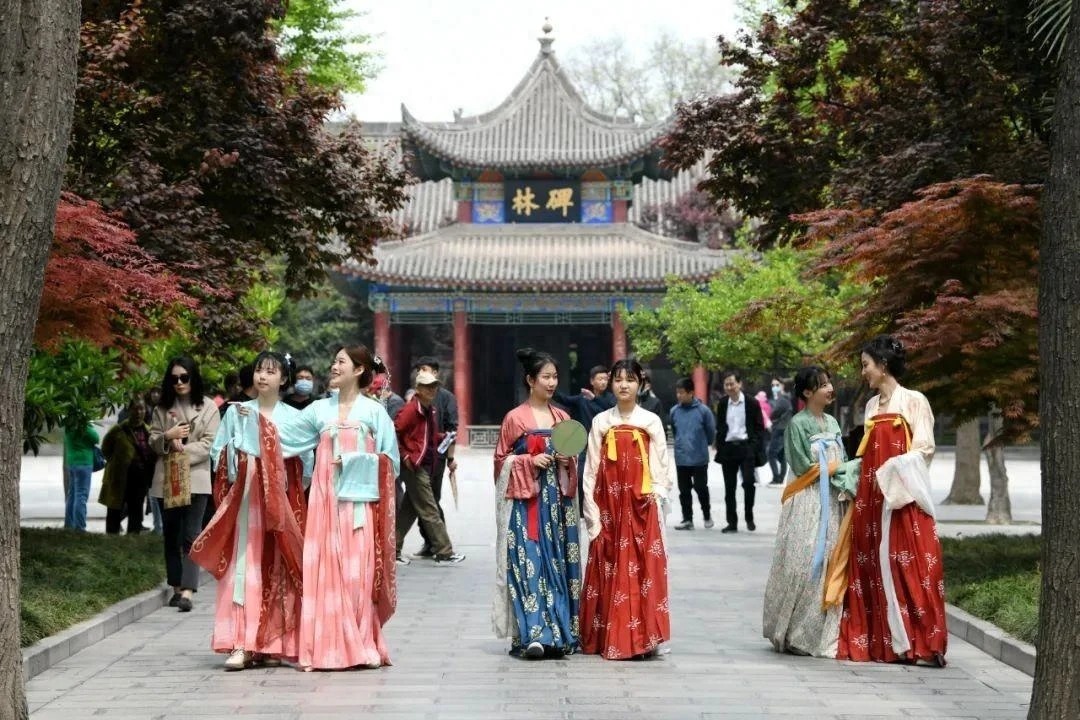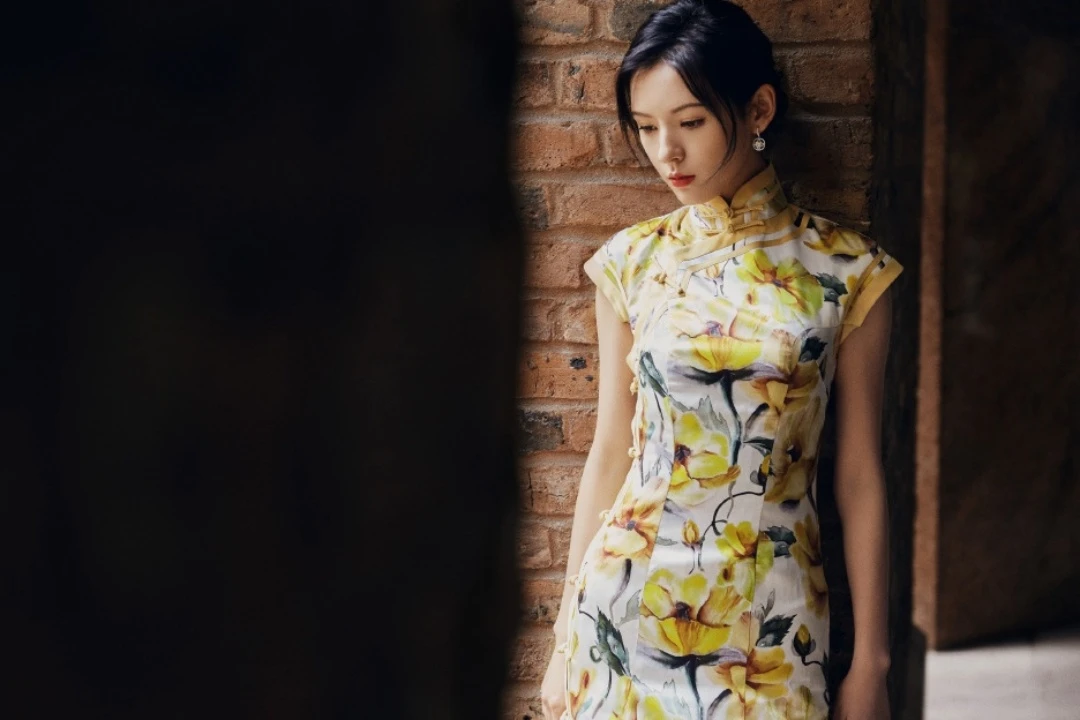-
What's the Best Material for Cheongsams?
The cheongsam, hailed as the 'second skin' of Chinese women, owes its charm not only to its exquisite tailoring but also to the texture of its fabric. The material of a cheongsam directly determines its comfort, aesthetics, and suitability for different occasions. So, what material is the most suitable? This article combines traditional craftsmanship with fashion trends to reveal the golden rules of cheongsam material selection. I. Top List of Classic Materials: Eastern Charm from Tradition to Modernity 1. Silk: A Synonym for Luxury and Heritage Advantages: Silk cheongsams are known for their softness, skin - friendliness, breathability, and moisture absorption. The natural luster can perfectly present the drape and noble temperament of the cheongsam. Traditional silk fabrics such as double - crepe, habutai, and Hangzhou gauze are especially suitable for summer receptions or banquets, looking as light and elegant as a 'walking work of art'. Points to note: They require professional dry - cleaning and should be protected from direct sunlight and friction to avoid snagging. 2. Satin: The First Choice for High - End Cheongsams Features: Fabrics like brocade and antique satin have a natural high - end luster. When paired with intangible cultural heritage techniques such as…- 0
- 0
- 23
-
Qingdao's Ronghua Aunts Bring Traditional Crafts into Fashion
The national trend has swept through the streets, and one can always catch two distinct charms in the fluttering skirts - the qipao is as graceful as an ink - colored peony, while the Hanfu unfolds like a landscape painting. This is not just a choice of clothing but a profound exploration of how Eastern aesthetics can thrive. Time - honored Codes in Stitches Qipao: A Poetic Declaration of Body Awakening In 1920, on Shanghai's Avenue Joffre, tailors used a copper ruler to measure the contours of the new era. The improved qipao tightened its wide sleeves, locked a bit of reserve with a standing collar, yet revealed a hint of allure through its side slit. The women in gossamer - silk qipaos in Eileen Chang's works walked on the Bund in high - heels, and each step echoed the call for freedom on the cobblestones. Today's silk qipaos still shine. Craftsmen at the Hangzhou Silk Museum have embedded Suzhou - embroidered peonies into the texture of acetate fiber, allowing ancient craftsmanship to blossom on modern fabrics. Hanfu: A Contemporary Narrative of a Thousand - year - old Civilization At the foot of the Xi'an City Wall, girls in cross…- 0
- 0
- 23
-
Zhang Ziyi's Iconic Qipao in the Screen
In an episode of the Chinese show The Birth of an Actor (演员的诞生), Zhang Ziyi (章子怡) and Zhou Yiwei (周一围) re-enacted a classic scene from the 1988 film Rouge (胭脂扣). To perfectly embody the characters, Zhang Ziyi borrowed two qipaos from costume designer Zhang Shuping (张叔平), famous for his work on The Grandmaster (一代宗师). This homage to the qipao, one of China's most iconic garments, invited a closer look at its cultural resonance and its timeless ability to embody feminine grace. As we explore the evolution of the qipao, it's clear why this traditional attire remains a powerful symbol of both beauty and heritage. The Qipao: More than Just a Dress The qipao, known for its sleek silhouette and elegant cut, has long been a symbol of Chinese femininity. Its high collar, tightly fitted bodice, and side slits beautifully emphasize the figure, and it has become a symbol of grace and allure. What makes this garment truly stand out is its ability to reflect the wearer's personality, from its material and pattern to its accessories. In the case of Zhang Ziyi's re-interpretation of the qipao in Rouge, the combination of the outfit's delicate floral design and its minimalist elegance captures…- 0
- 0
- 143
-
The Qipao as a Symbol of Womens Evolution in China
The qipao, a symbol of Chinese femininity and grace, has undergone a fascinating evolution since its inception in the early 20th century. At the heart of its transformation lies the story of societal shifts and the rising movement of women's independence, a tale that is embodied in the iconic garments once worn by the members of the Confucius family, which are now showcased at the Confucius Museum. The museum's exhibit, titled "The Old Collection of Republican-era Clothing," offers a rare glimpse into this evolving fashion. Initially, the qipao emerged in the form of a long vest-like garment during the early years of the Republic of China. This was a time when the traditional attire for women, primarily composed of skirts and jackets, was evolving to incorporate more practical and modern elements. Around the 1920s, a new fashion trend appeared in the form of a long vest that was worn over jackets, initially providing warmth. Over time, the vest grew longer and was worn without the skirt, and eventually, it was merged with sleeves. The result was the early version of what we now recognize as the qipao—a fusion of function and fashion that marked a clear departure from the previous…- 0
- 0
- 73
-
Heilongjiang's Artisan Women Shine at SCO Women's Forum
Heilongjiang's (黑龙江) Diverse Crafts Captivate International Audience In the picturesque coastal city of Qingdao, an unexpected cultural exchange unfolded as the Shanghai Cooperation Organization (SCO) Women's Forum became a vibrant showcase for the artistic prowess of women from China's northernmost province, Heilongjiang. From September 10th to 12th, 2024, the Heilongjiang Women's Federation presented a carefully curated collection of nine exquisite handcrafted pieces, each telling a unique story of the region's rich cultural tapestry and the skilled hands that keep these traditions alive. The exhibition stood as a testament to the diversity and ingenuity of Heilongjiang's female artisans. Visitors to the forum were treated to a visual feast that included the delicate Silkworm Wing Embroidery, the historically significant Mohe Embroidery, and the distinctive Black Fish Embroidery. These intricate needlework techniques, passed down through generations, showcase the province's long-standing textile traditions. However, it wasn't just traditional embroidery that caught the eye of international delegates. The province's agricultural heritage was beautifully represented through innovative mediums. A straw painting titled "China's Grain, China's Rice Bowl" served as a poignant reminder of the region's importance to national food security. Meanwhile, a reed silk painting called "Wetland Fairy" transported viewers to Heilongjiang's vast, pristine wetlands, highlighting the province's…- 0
- 0
- 61
-
Shenyang Qipao Culture Week Closes in Spectacular Fashion
In the heart of Shenyang, a city steeped in history and buzzing with modern energy, an extraordinary fusion of tradition and innovation has unfolded. The 2024 Shenyang (沈阳) Qipao Culture Week, an event that has become a hallmark of the city's cultural calendar, recently drew to a close with a breathtaking ceremony that left spectators in awe and ignited a renewed passion for this iconic garment. The closing ceremony, held in the urban oasis of Times Wencang City Park in the Dadong (丹东) District, was a testament to Shenyang's commitment to preserving and reimagining its cultural heritage. As the graceful silhouettes of qipao-clad models glided across the stage, it became clear that this was more than just a fashion show – it was a celebration of Shenyang's soul. Divided into three poetic chapters – "Mantingfang · Jinxiu," "Qingpingle · City Rhyme," and "Xiangjian Huan · Weiyang" – the ceremony wove together various art forms in a seamless tapestry. Dance performances like "In the Mood for Love" and "2046" paid homage to cinematic masterpieces while infusing them with the elegance of the qipao. A recitation of "You Are the April of This World" bridged the gap between traditional Chinese poetry and contemporary fashion, creating a…- 0
- 0
- 43
-
The Silken Revolution: Cheongsam's Journey Through Modern China
From Imperial Robe to Fashion Icon: The Metamorphosis of the Qipao In the tapestry of Chinese history, few garments have embodied the nation's cultural evolution as profoundly as the cheongsam, or qipao. This iconic dress, with its sleek silhouette and intricate designs, stands as a testament to China's tumultuous journey from imperial rule to modernity. Its transformation mirrors the country's own metamorphosis, reflecting changing social norms, political ideologies, and cultural values. The story of the modern cheongsam begins in the aftermath of the 1911 Xinhai Revolution, a seismic event that toppled China's last imperial dynasty and ushered in a new era of social and political change. As the dust settled on centuries of feudal rule, the rigid dress codes that had long defined Chinese society began to unravel. The fall of the Qing Dynasty meant the end of mandated Manchu-style clothing, opening the floodgates for a sartorial revolution. In the chaotic years following the revolution, China's fashion landscape became a vibrant patchwork of styles. Traditional Han clothing mingled with Western-inspired attire on the streets of major cities, reflecting the nation's struggle to reconcile its rich cultural heritage with the allure of modernization. It was in this crucible of change that…- 0
- 0
- 112
-
The Charm of Cheongsam at Jingbo Qinhan (Fangxia) Fashion Center
In the midst of Shanghai’s bustling cultural landscape, a hidden gem awaits those who seek the fusion of art, coffee, and aesthetic appreciation. The Jingbo Qinhan (Fangxia) (镜泊秦汉(方夏)) Fashion Center, nestled in the tranquil village of Fangxia, introduces visitors to a harmonious blend of traditional Chinese cheongsam elegance and modern creativity. Here, each cheongsam is not just a garment but a testament to craftsmanship and cultural revival. Fangxia Village, located in the serene district of Qingpu, Shanghai, has become a beacon for those who appreciate the intricate beauty of Chinese cultural heritage. The founder, Zhu Ying, a native of Anhui Province with a passion for cheongsam culture, envisioned this center as a homage to traditional craftsmanship and rural revitalization. Her journey from rural artisan to the establishment of Cloudscape Group in Shanghai reflects a dedication to preserving and evolving Chinese traditions. At Jingbo Qinhan (Fangxia) Fashion Center, every cheongsam is meticulously tailored through a process that involves design, pattern-making, cutting, pressing, and buttoning, ensuring each piece is unique. Zhu Ying emphasizes, "Whether enjoying a cup of coffee or donning a cheongsam while exploring our cultural exhibitions, we want every visitor to experience the unique blend of urban and rural charm that defines…- 0
- 0
- 111
-
Changes in Manchu Women's Attire at the End of the Qing Dynasty
From the twilight of the Qing Dynasty to the early decades of the Republic of China, Chinese society witnessed unprecedented political upheavals that profoundly impacted the lives of women. Amidst these changes, the evolution of women's fashion emerged as a striking reflection of China's transition from conservative constraints to open diversity. The Subtle Changes in Manchu Women's Attire at the End of the Qing Dynasty During the Qing Dynasty, under Manchu rule, women's attire maintained a relatively stable macroscopic characteristic while undergoing subtle transformations reflecting the pulse of the times. Unlike the generalized impression of "Qing Dynasty attire" often depicted in modern media, Manchu women's clothing evolved from simplicity to elaborate sophistication. Initially designed for the severe cold of northeastern Liaodong, the attire featured wide robes with large sleeves and floor-length gowns, both practical for warmth and conducive for horseback riding. As the Manchus consolidated their rule, the attire retained its basic structure but gradually incorporated refined Han Chinese craftsmanship and decorative elements. By the late Qing Dynasty, the attire of noblewomen became exceedingly luxurious, characterized by intricate rolling edges and exquisitely detailed embroidery, showcasing a high aesthetic pursuit and craftsmanship. In contrast to the evolution of Manchu women's attire,…- 0
- 0
- 91
-
The Legacy and Innovation of Beijing-Style Qipao
In the heart of Beijing, where history meets modernity, a celebration of cultural richness and sartorial elegance unfolded at the Beijing Institute of Fashion Technology. The culmination of the Beijing Cultural and Art Fund's 2023 annual project, the "Jinghua Charm: Heritage and Innovation" Centennial Beijing-Style Qipao Cultural Art Exhibition, mesmerized visitors with its blend of tradition and cutting-edge creativity. Honoring Tradition through Innovation Nestled within the renowned halls of the Beijing Institute of Fashion Technology, the exhibition breathed new life into the timeless allure of the qipao. Over a century's worth of history unfolded through meticulously curated displays of over a hundred qipao garments and accessories. From the early 20th century to the present day, each piece not only spoke of fashion but also echoed the cultural evolution of Beijing-style qipao. What set this exhibition apart was its seamless fusion of heritage with innovation. Utilizing state-of-the-art digital and virtual technologies, the qipao garments were not merely displayed but rejuvenated. They were digitally restored and reimagined, showcasing how classic qipao craftsmanship could harmoniously coexist with modern advancements. This marriage of tradition and innovation highlighted the adaptability and timelessness of Beijing-style qipao in a rapidly changing world. The Artistry of Beijing Institute…- 0
- 0
- 170
-
The Fashion Charm of Women's Dressing in 1900s
In the period of the Republic of China, Chinese society was in a turning point of changes in literature and art and ideological trends. This change was also reflected in women's clothing. The dressing of women in that era presented the characteristics of the alternation of the old and the new, with both the gentle and restrained of the old era and the Western-style ostentation of the new era, showing a unique personal charm. As well-known women at that time, Lin Huiyin(林徽因) and Hu Die(胡蝶)'s dressing styles even became representatives of the times. Lin Huiyin was a famous talented woman in the period of the Republic of China. She once went to the University of Pennsylvania in the United States for her further studies in architecture and art. Her dressing style combines Chinese and Western elements, showing the ideological state of progressive women in that era. Her dressing often features combinations of short tops with high-waisted pants and long leather boots, which not only appears slender, but also highlights the temperament of independent women. In addition, she also likes to drape the suit jacket over her shoulders, adding to the overall fashion sense. In terms of hairstyles, she often chooses…- 0
- 0
- 55
-
Nurturing Cultural Confidence Through Traditional Arts in Changning District
In recent days, the "Civilization in Chinese Culture" program of Changning District in 2024 has been making its way into numerous primary and secondary schools, bringing the beauty of traditional Chinese culture to young students. This initiative aims to instill cultural confidence among the youth through various activities such as learning Kunqu opera poetry and appreciating the elegance of Shanghai-style qipaos that have spanned a century. At Weining Road Primary School, Zhao Jinyu, a professional promoter of Kunqu opera and successor of the Peng school's guimen dan (female role), engaged the students with her presentation titled "Endless Art, Endless Learning—Sowing the Seeds of Kunqu Opera." She demonstrated the art of Kunqu opera by performing He Zhizhang's poem "Song of the Willow" in the melodious Kunqu singing style. For many students, this was their first encounter with poetry being recited so melodiously, sparking a strong interest among them. During her presentation, Zhao Jinyu patiently taught the students various hand gestures used in Kunqu opera and led them in practicing dance movements while wearing flowing-sleeved costumes. "During Kunqu opera performances, imagination plays a crucial role. Coupled with the colorful Kunqu costumes, it feels like watching a moving painting," Zhao Jinyu explained. "This…- 0
- 0
- 76
-
Exploring the Ideal Qipao Wearer: Elegance and Grace Personified
The qipao, with its rich history and timeless appeal, embodies a unique blend of cultural heritage and modern sophistication. This iconic garment has transcended centuries, evolving from traditional Chinese attire into a global symbol of elegance. However, not every woman feels equally comfortable or confident in a qipao. It takes a certain grace and demeanor to carry off this garment with poise and style. Understanding the Characteristics of an Ideal Qipao Wearer The allure of a qipao lies not only in its design but also in how it complements the wearer's physique and demeanor. Here are some characteristics that typically define an ideal qipao wearer: Graceful and Curvaceous Physique One of the defining features of a woman who suits a qipao is a gracefully curvaceous physique. The qipao is known for its form-fitting silhouette that accentuates the curves of the body, particularly the waist, hips, and legs. A woman with a slightly fuller figure, often described as having a "plump" or "curvy" appearance, can beautifully fill out the qipao's lines and curves, enhancing its elegance and charm. Full and Well-Defined Curves An ideal qipao wearer typically has well-defined curves in areas such as the face, waist, hips, and legs. These…- 0
- 0
- 36
-
Exploring 2024 New Chinese-Style Retro Fashion
In today's fashion world, new Chinese-style dressing is gradually emerging as a prominent trend. This style of dressing, which combines elements of traditional Chinese culture with modern fashion concepts, not only showcases the unique charm of Chinese culture but also satisfies modern people's pursuit of individuality and cultural connotation. This article will delve into the rise, characteristics, and significance of new Chinese-style dressing in contemporary society. The Rise of New Chinese-Style Dressing The rise of new Chinese-style dressing is not accidental; it is the result of multiple factors. First, with China's rapid economic development and rising international status, people's sense of identity and pride in their native culture has been growing. New Chinese-style dressing, as a way of expressing cultural confidence, has gained popularity among an increasing number of young people. Second, the revival of traditional culture has provided rich sources of inspiration for new Chinese-style dressing. China has a long history and splendid culture, with elements such as Chinese characters, qipao, hanfu, and embroidery all possessing unique aesthetic value. Designers innovate and reinterpret these traditional elements, integrating them with modern fashion to create new Chinese-style clothing that has both traditional cultural heritage and modern aesthetic appeal. Furthermore, the popularity…- 0
- 0
- 65
-
Zhang Yuxi: the Fashion Cheongsam Goddess
Zhang Yuxi, this female artist who has an extremely beautiful face and extraordinary talents, has always been the focus of everyone's attention. Her excellent performance in the variety show "First Grade" left a deep impression, and her love story with Wang Sicong even made people sigh at her maturity in emotional handling. Especially when she walked out of the country in a gorgeous cheongsam, her elegant posture and noble temperament instantly became the focus of the whole audience, and her name also became a synonym for beauty. Since Zhang Yuxi made her debut, she has won widespread love with her natural beauty. Her clear eyes and delicate features bring visual enjoyment every time she appears in front of the camera. Not only that, the elegant temperament and proper behavior that Zhang Yuxi shows on multiple occasions make her the goddess in the hearts of many fans. Whether at banquets or events, she can always show her own style, whether it is decent dresses or casual clothes, she can show her unique charm. And the charm of Zhang Yuxi in a cheongsam is even more irresistible. On the streets abroad, she was dressed in a yellow printed cheongsam, and the classical…- 0
- 0
- 231


